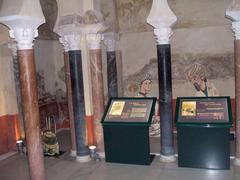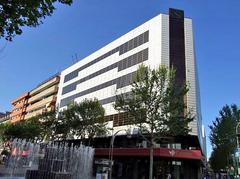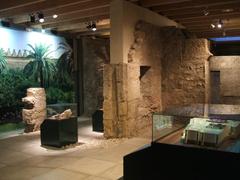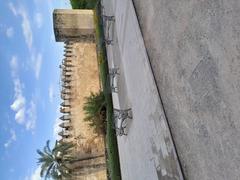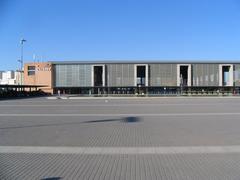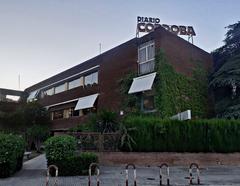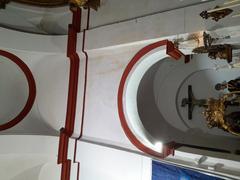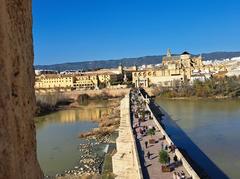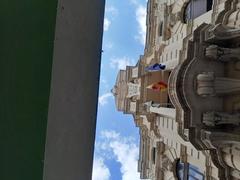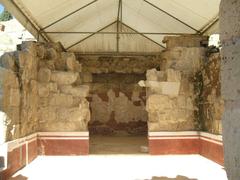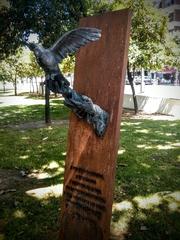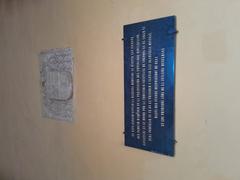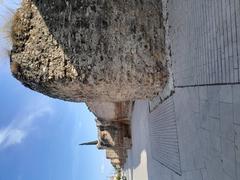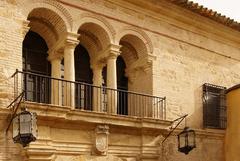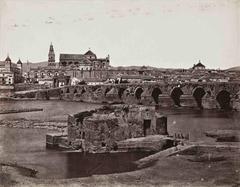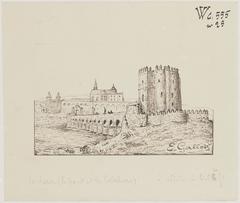Molino Carbonell: Visiting Hours, Tickets, and Historical Significance in Córdoba
Date: 14/06/2025
Introduction
Molino Carbonell stands as one of Córdoba’s most distinguished historical and industrial landmarks, deeply entwined with the evolution of the olive oil industry in Andalusia. Founded in the 19th century and rooted in a tradition of agricultural innovation, the site is notable for its architectural heritage, its pioneering contributions to olive oil production, and its enduring cultural legacy. This comprehensive guide presents an in-depth look at Molino Carbonell’s history, visitor information, and its significance within Córdoba’s broader network of historical sites.
Table of Contents
- Introduction
- Historical Overview: The Carbonell Family and Industrial Rise
- Royal Endorsement and International Expansion
- Architecture and Technological Innovation
- Economic and Social Impact
- Cultural Recognition and Heritage Status
- Visiting Molino Carbonell: Hours, Tickets, and Accessibility
- Nearby Attractions and Travel Tips
- Community Engagement and Preservation
- Frequently Asked Questions (FAQ)
- Conclusion
Historical Overview: The Carbonell Family and Industrial Rise
Established in 1866 by Antonio Carbonell y Llácer, Molino Carbonell emerged during a transformative era for Córdoba’s agricultural sector. Antonio’s vision combined traditional olive oil production with modern business practices, marking a significant shift in the local industry. The company rapidly gained prominence, leveraging Córdoba’s fertile lands and centuries-old expertise in olive oil.
Under the stewardship of Carlos Carbonell y Morand, the founder’s son, the business expanded further. The original San José mill was modernized into a mechanized flour and olive oil facility, reflecting the technological advancements of the late 19th century. This adaptation not only ensured Carbonell’s commercial success but also positioned Córdoba as a center of industrial innovation (Spain On This Day).
Royal Endorsement and International Expansion
A defining moment in Molino Carbonell’s history came in 1895, when it was granted the title of Official Supplier to the Spanish Royal Household. This royal endorsement affirmed Carbonell’s reputation for quality and opened new markets at home and abroad. In 1888, the company secured a pivotal contract with the British Admiralty, supplying olive oil to the British fleet until the end of World War I. This achievement underscored Carbonell’s global reach and cemented its status as an international brand (Spain On This Day).
Architecture and Technological Innovation
Molino Carbonell’s architectural design is emblematic of Córdoba’s industrial evolution. The site is strategically located along the Guadalquivir River, utilizing hydraulic power from a medieval weir (azud) to drive its machinery. The mill features robust masonry and brickwork, arched lintels, and vertical organization across multiple floors. In 1907, traditional millstones were replaced by modern grinding cylinders, a significant upgrade that improved efficiency and output (wikipedia).
Key features include:
- Thick stone and brick walls for durability and vibration resistance
- Brick-vaulted ceilings
- Gravity-fed organization for efficient milling
- Ceramic plaques bearing the Carbonell name as rare examples of industrial branding
Economic and Social Impact
Molino Carbonell’s growth provided significant employment for local residents and contributed to the modernization of Córdoba’s agricultural practices. By mid-20th century, Carbonell was Spain’s leading olive oil exporter, with products reaching over 70 countries. The company’s success helped stimulate related industries such as packaging and transport, reinforcing Córdoba’s reputation as a center for high-quality food production (Spain On This Day).
Cultural Recognition and Heritage Status
Molino Carbonell is part of a historic ensemble of eleven mills along the Guadalquivir River, collectively recognized as Patrimonio Histórico Andaluz (Andalusian Historical Heritage) since 2009 (wikipedia). In 2010, it received further protection as a Bien Industrial (Industrial Asset) by the Instituto del Patrimonio Histórico Andaluz (IAPH), highlighting its importance in Andalusia’s industrial and cultural narrative (eldiadecordoba.es).
Visiting Molino Carbonell: Hours, Tickets, and Accessibility
Current Status
Molino Carbonell’s accessibility varies:
- Museum Access: Parts of the site have been adapted as a museum, offering historical exhibits, olive oil tastings, and guided tours. However, public access may be limited or subject to preservation needs. Always check the latest status before visiting (Turismo de Córdoba).
- Visiting Hours: When open, typical hours run from 10:00 AM to 6:00 PM, Tuesday to Sunday. Hours may shift seasonally or for special events.
- Tickets: Prices, when applicable, are generally €3–€8 for adults, with discounts for students, seniors, and children. Some special events or tastings may have higher fees.
- Booking: Advance booking is advised, especially for guided tours or group visits. Contact the Córdoba Tourism Office or check the official website for up-to-date information (Touristlink).
- Accessibility: The museum is largely accessible, but some historic areas may have uneven surfaces. Contact ahead for information on ramps or assistance.
What to Expect
- Exhibits: Antique olive presses, vintage machinery, interactive displays, and the story of Carbonell’s rise to international prominence.
- Tastings: Guided olive oil tastings are available during certain tours.
- Duration: Plan for 45–90 minutes, depending on your interests.
Directions
- By Foot: The site is within walking distance of Córdoba’s historic center.
- Public Transport: Buses and taxis connect to the area. Parking is available in the city center.
Nearby Attractions and Travel Tips
Molino Carbonell is ideally located near major Córdoba landmarks:
- Mezquita-Catedral de Córdoba
- Alcázar de los Reyes Cristianos
- Roman Bridge
- Molino de la Alegría (Museum of Paleobotany)
- Local markets and tapas bars for authentic Andalusian cuisine
Travel Tips:
- Visit in spring or autumn for pleasant weather.
- Book tours in advance during peak seasons.
- Wear comfortable shoes for walking and exploring nearby sites.
Community Engagement and Preservation
Local organizations, such as the Asociación en Defensa del Patrimonio Industrial de Córdoba, are active in promoting the preservation of Molino Carbonell and its surrounding mills. These groups offer educational programs, virtual tours, and advocate for protective measures to ensure Córdoba’s industrial heritage is accessible to future generations (eldiadecordoba.es).
Frequently Asked Questions (FAQ)
Q: Is Molino Carbonell open to visitors?
A: Public access may be limited; check with Córdoba’s tourist offices or the museum directly for current hours.
Q: How much are tickets?
A: When open, tickets generally range from €3–€8, with discounts available.
Q: Are guided tours and tastings available?
A: Yes, subject to availability and advance booking.
Q: Is the site accessible for visitors with mobility needs?
A: The museum is generally accessible, but some areas may have uneven terrain. Contact ahead for details.
Q: What nearby sites should I visit?
A: Combine your visit with the Mezquita-Catedral, Alcázar, Roman Bridge, or other historic mills along the Guadalquivir.
Conclusion
Molino Carbonell remains a cornerstone of Córdoba’s industrial and cultural heritage. Its story—from traditional olive oil production to international acclaim—embodies the spirit of innovation and resilience that defines Andalusia. While access to the original mill may vary, the broader legacy of Carbonell is celebrated through museum exhibits, guided experiences, and ongoing preservation work. Visitors are encouraged to stay informed through official channels, take part in local heritage initiatives, and immerse themselves in the unique narrative that Molino Carbonell offers. Exploring this historic site, alongside Córdoba’s other treasures, enriches any journey through the heart of Andalusia.
For more information, updates, and travel tips, visit the official Córdoba Tourism Office or Touristlink’s overview. Download the Audiala app for curated tours and heritage resources.
References
- Carbonell: The oil from Córdoba which fed the British fleet (Spain On This Day)
- Patrimonio Industrial Córdoba Desconocido Ciudad (El Día de Córdoba)
- Molinos del Guadalquivir (Córdoba) (Wikipedia)
- Córdoba Tourist Information Offices (Turismo de Córdoba)
- Molino Carbonell Olive Oil Museum Overview (Touristlink)
- Molinos: Río, primera industria de Córdoba (Diario Córdoba)
